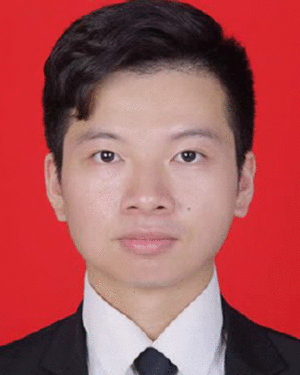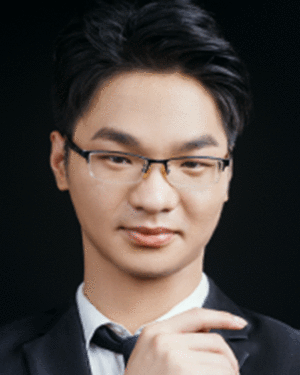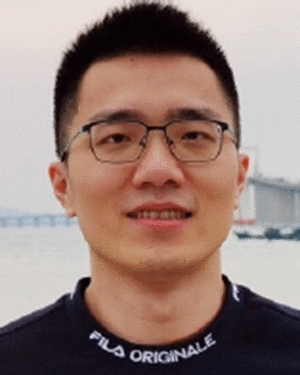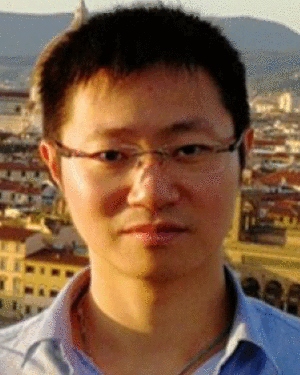Abstract:
Important people detection aims to identify the most important people (i.e., the people who play the main roles in scenes) in images, which is challenging since people's ...Show MoreMetadata
Abstract:
Important people detection aims to identify the most important people (i.e., the people who play the main roles in scenes) in images, which is challenging since people's importance in images depends not only on their appearance but also on their interactions with others (i.e., relations among people) and their roles in the scene (i.e., relations between people and underlying events). In this work, we propose the People Relation Network (PRN) to solve this problem. PRN consists of three modules (i.e., the feature representation, relation and classification modules) to extract visual features, model relations and estimate people's importance, respectively. The relation module contains two submodules to model two types of relations, namely, the person-person relation submodule and the person-event relation submodule. The person-person relation submodule infers the relations among people from the interaction graph and the person-event relation submodule models the relations between people and events by considering the spatial correspondence between features. With the help of them, PRN can effectively distinguish important people from other individuals. Extensive experiments on the Multi-Scene Important People (MS) and NCAA Basketball Image (NCAA) datasets show that PRN achieves state-of-the-art performance and generalizes well when available data is limited.
Published in: IEEE Transactions on Multimedia ( Volume: 25)
Funding Agency:

School of Computer Science and Engineering, Sun Yat-sen University, Guangzhou, China
Yu-Kun Qiu received the B.S. degree from Jinan University, Guangzhou, China, in 2018. He is currently working toward the Ph.D. degree in computer science and technology with the School of Computer Science and Engineering, Sun Yat-sen University, Guangzhou, China. His research interests include visual relation modeling, situation recognition, and 3D reconstruction based on posed images.
Yu-Kun Qiu received the B.S. degree from Jinan University, Guangzhou, China, in 2018. He is currently working toward the Ph.D. degree in computer science and technology with the School of Computer Science and Engineering, Sun Yat-sen University, Guangzhou, China. His research interests include visual relation modeling, situation recognition, and 3D reconstruction based on posed images.View more

School of Computer Science and Engineering, Sun Yat-sen University, Guangzhou, China
Fa-Ting Hong received the B.S. degree from the South China University of Technology, Guangzhou, China, in 2018 and the M.S. degree from Sun Yat-sen University, Guangzhou, China, in 2021. He is currently working toward the Ph.D. degree with the Hong Kong University of Science and Technology, Hong Kong. His research interests include image generation and talking head video generation.
Fa-Ting Hong received the B.S. degree from the South China University of Technology, Guangzhou, China, in 2018 and the M.S. degree from Sun Yat-sen University, Guangzhou, China, in 2021. He is currently working toward the Ph.D. degree with the Hong Kong University of Science and Technology, Hong Kong. His research interests include image generation and talking head video generation.View more

School of Computer Science and Engineering, Sun Yat-sen University, Guangzhou, China
Wei-Hong Li is currently a Research Associate with the School of Informatics, The University of Edinburgh, Edinburgh, U.K.
Wei-Hong Li is currently a Research Associate with the School of Informatics, The University of Edinburgh, Edinburgh, U.K.View more

School of Computer Science and Engineering, Sun Yat-sen University, Guangzhou, China
Pengcheng, Laboratory, Shenzhen, China
Key Laboratory of Machine Intelligence and Advanced Computing, Ministry of Education, China
Wei-Shi Zheng received the Ph.D. degree in applied mathematics from Sun Yat-sen University, Guangzhou, China, in 2008. He is currently a full Professor with Sun Yat-sen University. He joined Microsoft Research Asia Young Faculty Visiting Programme. His research interests include person or object association and activity understanding in visual surveillance, and the related large-scale machine learning algorithm. He is an ...Show More
Wei-Shi Zheng received the Ph.D. degree in applied mathematics from Sun Yat-sen University, Guangzhou, China, in 2008. He is currently a full Professor with Sun Yat-sen University. He joined Microsoft Research Asia Young Faculty Visiting Programme. His research interests include person or object association and activity understanding in visual surveillance, and the related large-scale machine learning algorithm. He is an ...View more

School of Computer Science and Engineering, Sun Yat-sen University, Guangzhou, China
Yu-Kun Qiu received the B.S. degree from Jinan University, Guangzhou, China, in 2018. He is currently working toward the Ph.D. degree in computer science and technology with the School of Computer Science and Engineering, Sun Yat-sen University, Guangzhou, China. His research interests include visual relation modeling, situation recognition, and 3D reconstruction based on posed images.
Yu-Kun Qiu received the B.S. degree from Jinan University, Guangzhou, China, in 2018. He is currently working toward the Ph.D. degree in computer science and technology with the School of Computer Science and Engineering, Sun Yat-sen University, Guangzhou, China. His research interests include visual relation modeling, situation recognition, and 3D reconstruction based on posed images.View more

School of Computer Science and Engineering, Sun Yat-sen University, Guangzhou, China
Fa-Ting Hong received the B.S. degree from the South China University of Technology, Guangzhou, China, in 2018 and the M.S. degree from Sun Yat-sen University, Guangzhou, China, in 2021. He is currently working toward the Ph.D. degree with the Hong Kong University of Science and Technology, Hong Kong. His research interests include image generation and talking head video generation.
Fa-Ting Hong received the B.S. degree from the South China University of Technology, Guangzhou, China, in 2018 and the M.S. degree from Sun Yat-sen University, Guangzhou, China, in 2021. He is currently working toward the Ph.D. degree with the Hong Kong University of Science and Technology, Hong Kong. His research interests include image generation and talking head video generation.View more

School of Computer Science and Engineering, Sun Yat-sen University, Guangzhou, China
Wei-Hong Li is currently a Research Associate with the School of Informatics, The University of Edinburgh, Edinburgh, U.K.
Wei-Hong Li is currently a Research Associate with the School of Informatics, The University of Edinburgh, Edinburgh, U.K.View more

School of Computer Science and Engineering, Sun Yat-sen University, Guangzhou, China
Pengcheng, Laboratory, Shenzhen, China
Key Laboratory of Machine Intelligence and Advanced Computing, Ministry of Education, China
Wei-Shi Zheng received the Ph.D. degree in applied mathematics from Sun Yat-sen University, Guangzhou, China, in 2008. He is currently a full Professor with Sun Yat-sen University. He joined Microsoft Research Asia Young Faculty Visiting Programme. His research interests include person or object association and activity understanding in visual surveillance, and the related large-scale machine learning algorithm. He is an Associate Editor for the Pattern Recognition Journal and the Area Chair of a number of top conferences. He was the recipient of the Excellent Young Scientists Fund of the National Natural Science Foundation of China and Royal Society-Newton Advanced Fellowship of United Kingdom.
Wei-Shi Zheng received the Ph.D. degree in applied mathematics from Sun Yat-sen University, Guangzhou, China, in 2008. He is currently a full Professor with Sun Yat-sen University. He joined Microsoft Research Asia Young Faculty Visiting Programme. His research interests include person or object association and activity understanding in visual surveillance, and the related large-scale machine learning algorithm. He is an Associate Editor for the Pattern Recognition Journal and the Area Chair of a number of top conferences. He was the recipient of the Excellent Young Scientists Fund of the National Natural Science Foundation of China and Royal Society-Newton Advanced Fellowship of United Kingdom.View more


